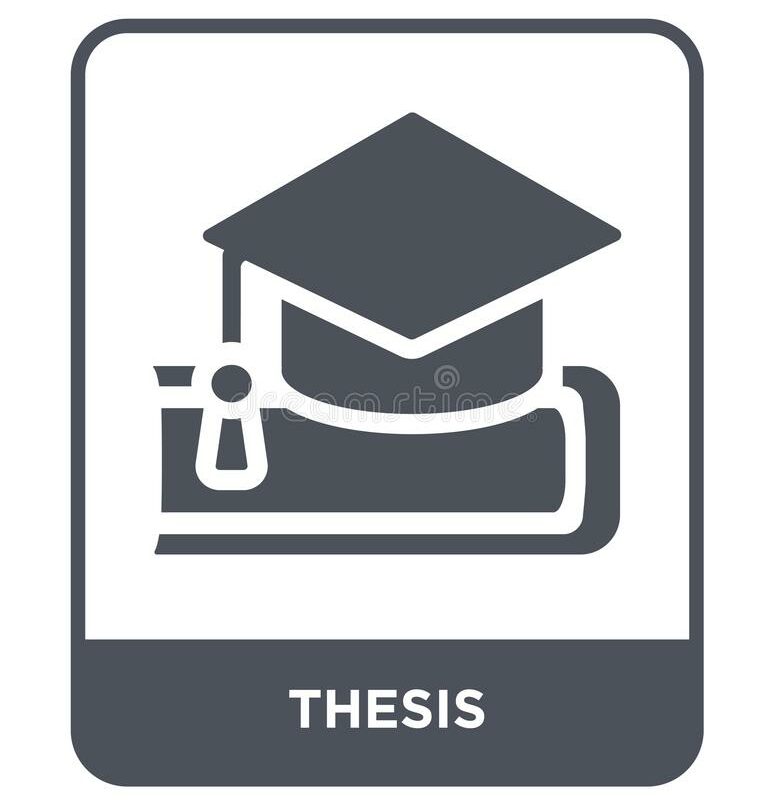- Diana Hayder Hussein
- diana.hussein@epu.edu.iq
- +9647504062524
- Dissertation-diana
-
The emerging Fifth-Generation (5G) technology towards Internet of Vehicles (IoV) provides numerous advantages, such as lower levels of latency, stable link connections, and support for high mobility. However, avoiding vehicle collisions in IoV is a challenging task due to disseminating Emergency Safety Messages (ESMs) without strict delay and reliability requirements. To address this issue, this study proposes a novel intelligent Software-Defined Networking-based Collision Avoidance (SDNCA) framework assisted 5G. The proposed SDNCA framework employs two system models, each comprising three proposed algorithms. In the first system model, primarily, SDNCA performs the Vehicular Federated Learning (VFL) algorithm that accurately estimates the risk severity for each vehicle via training the proposed Risk Severity-Artificial Neural Network (RS-ANN) model through the implementation of federated learning among vehicles. The SDNCA framework applies the SDN algorithm to achieve three main objectives. First, it calculates the Quality of Service (QoS) of the ESM. Second, it dynamically allocates both 5G network and computing resources for three Virtual Networks (VNs). Third, it selects the optimal 5G base station (gNB) for routing the ESM to the destination vehicle. To ensure effective forwarding for each ESM, SDNCA deploys the gNB algorithm at the selected gNB to schedule the ESMs considering their priorities and configures the 5G network resources and computing resources based on the OpenFlow control message received from the SDN.
The implementation of the second system model integrates the VFL, SDN, and gNB algorithms, focusing on the risk distance between the source and destination vehicles. The objective of the second system model is to ensure the successful transmission of ESMs in scenarios when considering the risk distances between vehicles.
The two system models have been implemented using three simulation tools: Network Simulator (NS3), Python programming language, and a Mininet network emulator. The real-time simulation results demonstrate the evaluation of the SDNCA framework into two sections, compared with the existing related research. The first section assesses the performance of the SDNCA framework by varying the density and speed of the vehicles. These results include 17% and 20% Network Overhead (NO), 17% and 20% Computational Complexity (CC), 0% Collision Rate (CR), 18 ms End-to-End (E2E) Delay, 89%–90% Packet (ESM) Transmission Reliability (TR), 99.5% and 99.4% Successful Routing Ratio (SRR), 0.0050 ms Routing Efficiency (RE), 0% Packet Drop Ratio (PDR), 0.25 and 0.5 Channel Utilization (CU), and 4.5 ms and 4 ms E2E Delay with different values of the allocated bandwidth. The second section evaluates the performance of the SDNCA framework at distances ranging up to 30 meters between the source and destination vehicles, taking into account different vehicle densities and speeds. These results include 97%–99.5% and 98.4%–99.8% SRR, 4 ms and 3.5 ms RE, 0% CR, and 4.5 ms E2E Delay.
- Erbil Technical Engineering College
- Information Systems Engineering
- Communications and Networking
- Shorsh Anwar Abdalla
- shorsh.mam20@epu.edu.iq
- +9647504935504
- كاریگەریی فەیسبووك لەسەر ئازادیی باوەڕ لای گەنجانی هەرێمی كوردستان
-
پوختە
ئامرازە نوێچەشنەکانی راگەیاندن (New Media)، به گشتیی پانتاییەكی كراوەن بۆ گەیاندنی پەیام و راوبۆچوون و زانیارییە جیاوازەكان. لەناو میدیای نوێدا، تۆڕە كۆمەڵایەتییەكان (Social Networking) بە گشتیی، بێ بەرامبەر دەرفەتێكی فراوانیان بۆ دەرخستن و گفتوگۆكردن لەبارەی بیروڕا و باوەڕە جیاوازەكانەوە رەخساندووە، هەروەها (فەیسبووك) وەك سەكۆیەکی بەربڵاوی تۆڕە كۆمەڵایەتییەكان و پرسی ئایین و باوەڕە جیاوازەكانیش وەك پرسێكی هەمیشەیی لەناو ئەم سەكۆیەدا هەیە، هەربۆیە ئامانجە سەرەکییەكانی ئەم توێژینەوەیە، زانینی ئاستی کاریگەریی تۆڕی کۆمەڵایەتیی (فەیسبووكـ)ـە لەسەر ئازادیی باوەڕ لای گەنجانی هەرێمی كوردستان، هەروەها زانینی ئەندازەی کاریگەریی رەوشی ئازادیی باوەڕ لە زەمینی واقیع (واقیعی راستینە) لە هەرێمی کوردستان لەسەر واقیعی گریمانە كراو.
توێژینەوەكە، لە رووی جۆرەوە، بە توێژینەوە پەسنکاریی (وەسفییـ)ـەكان هەژماردەكرێت، توێژەر بۆ گەیشتن بە وەڵامی پرسیارەكان و بە دیهێنانی ئامانجەكانی، رێبازی (رووپێوكاریی)ـی بەكارهێناوە. هەروەک كۆمەڵی توێژینەوەكە، بریتییە لە هەرێمی كوردستان، مشتەكەیشی (مشتەیەكی ناهەڕەمەکیی مەبەستدار)ـە لە گەنجانی کورد لە هەرێمی كوردستان: (هەولێر، سلێمانی، دهۆك و هەڵەبجە)، ژمارەیان (702) گەنجە و بە شێوەی فۆرمی سەرهێڵ (ئۆنلاین) وەڵامدراونەتەوە و توێژەر، بۆ بەدەستهێنانی دەرەنجامی ورد و دروست، کەرەستەی ئاماریی (SPSS- Statistical Package for the Social Sciences)ـی بەکارهێناوە.
توێژەر لە کۆتایی توێژینەوەکەدا بە چەند دەرەنجامێک گەیشتووە، لەوانە؛ لایەنگران و بانگخوازانی هیچ ئایین و باوەڕێك وەك پێویست لە فەیسبووكدا، گەنجانیان هاننەداوە بۆ كرانەوە، یەكترقبوڵكردن و ئازادیی و ئازادیی باوەڕ و ئایین، ئەمەش پێچەوانەی بەند و بڕگەی جاڕنامە و پەیماننامە و رێكەوتننامە نێودەوڵەتییەكانی بواری مافەكانی مرۆڤ و فەلسەفە و تەنانەت هەندێك دەقی ئایینییشە، كە كار لەسەر كرانەوە و یەكترقبوڵكردن دەكات؛ هەروەها لە كۆی مشتەی توێژینەوەكە دەردەكەوێت، دوای باوەڕی زۆرینەی ئایینی (ئیسلام)، (بێ ئایین) بە دووەم باوەڕ دێت لە هەرێمی كوردستان، لە كاتێكدا لە رەشنووسی دەستووری هەرێم و یاسای پەرلەمان و وەزارەتی ئەوقافی هەرێمدا، جێی بۆ نەكراوەتەوە و باس و پرسی مافەكانی نەهاتووە، چوونكە ئەمە دەركەوتنی سەرەتایەكی نوێیە لە پرسی باوەڕی ئایینیی لە كۆمەڵی كوردی لە هەرێمی كوردستاندا.
هەروەها بەپێی ئەو تیۆریانەی لە توێژینەوەكەدا پشتیان پێبەستراوە، توێژەر بەو دەرەنجامەش گەیشتووە، هەموو ئەو تایبەتمەندییانەی میدیای نوێ، ئامرازی كارلێككارین و سنوری ئازادیی فراوان دەكەن، بەڵام بە شێوەیەكی گشتیی، وای لە گەنجی بەكارهێنەری كورد لە هەرێمی كوردستان نەكردووە، كە ئاسۆی بیركردنەوەی فراوان بێت، بە تایبەت لە بواری یەكترقبوڵكردن و باوەڕی ئایینیی و ئازادیی باوەڕ.
بەرمەبنای ئەو دەرەنجامانەی سەرەوەش، توێژەر چەند راسپاردەیەکی ئاراستەی لایەنە پەیوەنددارەکان كردووە، لەوانە؛ لایەنە پەیوەنددارەکان لە پەرلەمان، حکومەت، ناوەندەکانی پەروەردە و خوێندنی باڵا، رێکخراوەکانی کۆمەڵی مەدەنیی و ... تاد، کاری ورد و رژد بکەن بۆ هۆشیاریی تاکەکان، هەم لە روی پاراستنی ماف و ئازادییەکان، هەم رەچاوکردنی ئەو ماف و ئازادییانە لە تۆڕە کۆمەڵایەتییەکاندا هەیە. هەروەها توێژەر بەو دەرەنجامە گەیشتووە، لە هەرێمی كوردستان ئاست و رێژەی هەندێك لە باوەڕەكانی تر بەرزبووەتەوە، پێویستە پێداچوونەوە بۆ رەشنوسی دەستوری هەرێمی كوردستان بكرێت و ئەو بڕگە و مادانەی مافی باوەڕدارانی جیاواز لەبەرچاوناگرێت، یان پێشێلیان دەكات، هەمواربكرێنەوە.
هەروەها توێژەر لەكاتی توێژینەوەكەدا توشی چەندین ئاستەنگ بووە لەوانە، پەیوەندی بەچەندین كەسی ئەكادیمیی و پسپۆڕ و نوسەری بوارەكە كرد، هەندێكیان بە پاساوی جۆراوجۆر ئامادە نەبوون بەشداری ئەم توێژینەوەیە بكەن، ئەویش بەشێكی بۆ هەستیاریی پرسەكە لە كۆمەڵی كوردیدا دەگەڕێتەوە.
کلیلەوشەکان: كاریگەریی، فەیسبووك، ئازادیی باوەڕ، گەنج، هەرێمی كوردستان
- Erbil Technical Administrative College
- media technical
- media
- Aram Jawhar Mohammad
- aram.mohammad@epu.edu.iq
- +9647507296666
- Aram Jawhar
-
Information has been an integral part of firm success. Asymmetric information has been the main concern in successfully meeting firm objectives. This concern has been related to the need for more intense corporate governance and International Financial Reporting Standards (IAS, IFRS) as emphasized by recent studies and policymakers in some developing countries. Hence, the present study examines the integrative impact of corporate governance and International Financial Reporting Standards (IAS, IFRS) on the asymmetric information of the opinions of a sample of accounting academics and external auditors in Erbil city. The study uses four dimensions of corporate governance to predict the asymmetric information namely board of directors, audit committee, market mechanism and external audit. It has also used the survey method to obtain the primary data from the respondents by using survey questionnaires The researcher also used the mail method to distribute the survey questionnaires to selected respondents comprising auditors and academics. The study also used the SPSS to check the data reliability, validity and association among variables. The outcomes revealed that the corporate governance dimensions (i.e., board of directors, audit committee, market mechanism, and external audit and International Standards for Accounting (IAS, IFRS) implementation) have reduced the asymmetric information in firms. This study guides the policymakers in making policies related to reducing the asymmetric information by proper implanting International Financial Reporting Standards (IAS, IFRS) and effective corporate governance.
- Erbil Technical Administrative College
- Accounting Department
- Accounting
- Hoshyar Ahmad Mehmood
- hoshyarbanany@yahoo.com
- +9647504156797
- کۆتایی
-
The objective of the study, entitled "Methods of News Writing on Kurdish Websites as Reflected on NRT and Kurdistan24's Websites," is to determine the level of attention Kurdish websites pay to security news in the Kurdistan Region and the role of Kurdish websites in presenting security information. Additionally, the research aims to determine the structure and linguistic aspects of news headlines.
Another objective of the study is to identify the forms used, such as images, videos, and graphics, in conjunction with news texts. The study also seeks to identify the sources on which Kurdish websites rely to publish security information and assess their relevance and official status about security issues concerning the Kurdistan Regional Government (KRG).
This research entails descriptive analysis, with the researcher employing the mapping form as the primary tool for data and information collection. Security news from Kurdish websites was identified as research communities, with NRT and Kurdistan24 serving as satellite research samples between 1/1/2022 and 31/12/2022. During this period, NRT published 356 news items, and Kurdistan24 published 423 news items, resulting in a total of 779 news items related to security.
The study yielded several conclusions, the most significant of which are as follows:
- Linguistically, the headlines of security news on Kurdish websites vary to some extent, with a relatively balanced use of phrases. However, there are substantial differences in content and direction, with each website altering phrases according to its core message to achieve its specific purpose.
- In terms of content and headlines, although a balanced approach ranks first at 46.04%, and bias ranks third at 14.63%, the latter figure remains relatively high for security news, which is one of the most sensitive areas of news reporting.
- Erbil Technical Administrative College
- media
- security Media



